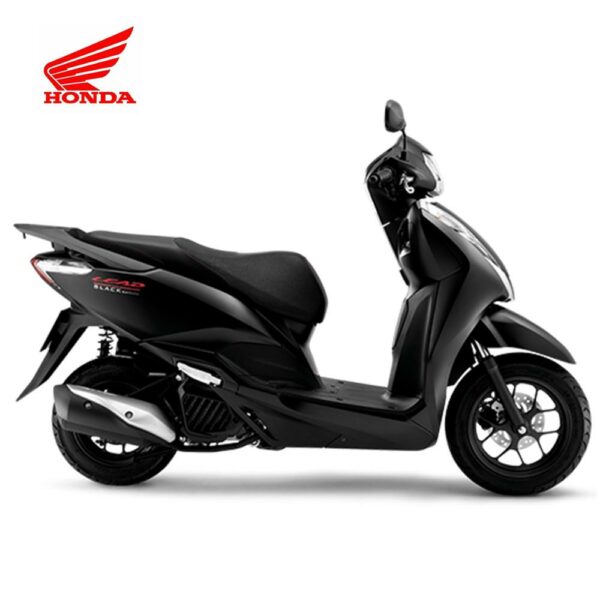Honda NSX - Model History - Sports Cars
TheHonda NSX This is a car that I have always respected, not only because I grew up on it (we are from the same year), but also because no Japanese has ever been so close in philosophy and concept to the European supercars that I love so much.
26 years after its founding, Honda has introduced a new model equipped with a hybrid engine and all-wheel drive. I don't mind the new interpretation, albeit a little bit different from the "old" NSX; but these are the days when supercars are hybrid and four-wheel drive is no longer an SUV.
I endorse and support all new forms of efficient technology, but I must admit that my love for sports cars is based on gasoline, high revs and (pass it on to me too) polluting engines.
The birth of a myth
The first NSX was not born overnight, but was the result of long research and long and painstaking work on improvement. In 1984, the design of the car was commissioned Pininfarina under the name HP-X (Honda Pininfarina eXperimental), prototype equipped engine The 2.0-liter V6 is located in the center of the vehicle.
The model began to take shape and the HP-X concept car became the NS-X (New Sportcar eXperimental). In 1989, it appeared at the Chicago Auto Show and Tokyo Auto Show under the name NSX.
The design of the car has become very dated over the years, even the design of the first series, and it is easy to see Honda's intention to build a supercar similar to European cars. Technologically, the NSX was at the forefront, boasting technical features such as an aluminum body, chassis and suspension, titanium connecting rods, electric power steering and four-channel independent ABS as early as 1990.
The first generation NSX saw the light of day in 1990: it was powered by a 3.0-liter V6 engine. V-TEC from 270 hp and accelerated to 0 km / h in 100 seconds. It was the first car to have an engine with titanium connecting rods, forged pistons and capable of 5,3 rpm, modes typically reserved for racing cars.
If the car has performed so well, it is also thanks to the world champion. Ayrton Senna, then the McLaren-Honda Pilto, which made a significant contribution to the development of the car. Senna, in the final stages of development, insisted on strengthening the car's chassis, which, in his opinion, was unsatisfactory, and on finalizing the tuning.
La NSX-CHEAP
Honda has also built a series of extreme cars for those looking for an uncompromising vehicle, like the Porsche today with the GT3 RS. Thus, already in 1992, he produced about 480 copies of the NSX Type R o. NSX-R.
The Erre was clearly more extreme than the original NSX: it weighed 120 kg less, fitted with Enkei aluminum wheels, Recaro seats, much stiffer suspension (especially at the front) and had a more track-oriented approach and slightly less understeer. up.
1997 - 2002, improvements and changes
Seven years after its founding, Honda decided to make a number of improvements to the NSX: it increased the displacement to 3.2 liters, power to 280 hp. and a torque of up to 305 Nm. However, so were several Japanese cars from that era. , then NSX it developed more power than stated, and often the samples tested on the bench developed a power of about 320 hp.
In the 97 year Speed six-speed manual transmission and oversized discs (290 mm) with wider wheels. With these changes, the NSX accelerates from 0-100 in just 4,5 seconds (the time it takes for a 400-horsepower Carrera S).
With the advent of the new millennium, it was decided to update the design of the car, replacing the retractable headlights - now also the "eighties" with fixed xenon headlights, new tires and a suspension group. Me too'aerodynamics it was finalized, and with new modifications the car accelerated to 281 km / h.
In the course of restyling in 2002, the interior was also noticeably improved, decorated and modernized with leather inserts.
In the same year, a new version of the NSX-R was introduced with further weight savings and several improvements. However, the engineers chose the pre-styling model as a starting point because of its greater lightness and strength.
This was used carbon fiber abundance to lighten the car body, with the sound-absorbing panels, climate and stereo system removed. The shock absorbers have been redesigned and modified for road use, while the aerodynamics and engine have been upgraded to reach 290bhp, apparently according to official statements.
Despite the fact that the press criticized the NSX for being too old and expensive a project, especially when compared to European cars (much more powerful and new); the car was extremely fast and efficient. Tester Motoharu Kurosawa he drove around the ring in 7 minutes and 56 seconds - the same time as the Ferrari 360 Challenge Stradale - even with a weight of 100 kg more and 100 hp. less.
Present and future
Production of the new NSX with a powertrain will begin in 2015. hybrid e four-wheel drivecapable of accelerating from 0 to 100 km / h in 3,4 seconds and accelerating around the ring in a time close to that of 458 Italia (7,32 seconds).
Here's what the development manager said: Ted Klaus, about the new creation of Honda. It seems that the goal is the same as 25 years ago - to match the Europeans in terms of dynamics and driving pleasure. The new NSX carries a huge burden: to be the heir to one of the greatest sports cars of all time. We can't wait to try.
